They say… 
Best beer and travel writing award 2015, 2011 -- British Guild of Beer Writers Awards
Accredited Beer Sommelier
Writer of "Probably the best book about beer in London" - Londonist
"A necessity if you're a beer geek travelling to London town" - Beer Advocate
"A joy to read" - Roger Protz
"Very authoritative" - Tim Webb.
"One of the top beer writers in the UK" - Mark Dredge.
"A beer guru" - Popbitch.

|
ABV: 4.2%
Origin: Downton, Wiltshire, England
Website: www.hopback.co.uk
CAMRA North London tasting February 2010
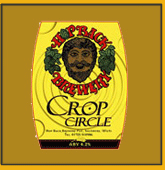 Hop Back Crop Circle Hop Back have grown into one of the major British craft brewers with an innovative but cannily targeted range of speciality ales led by the trendsetting Summer Lightning, and a strategy that pursues the takeout trade through reliable bottle conditioned supplies to supermarkets as well as cask ale drinkers. Crop Circle is one of those take home beers particularly aimed at warm days where otherwise a can of anaemic mass produced lager might fall to hand.
Back when I first started taking tasting notes, I was rather unkind to Crop Circle, noting it was refreshing but so was water, and wondering if the urge to lure drinkers raised on blandness had gone rather further than meeting them halfway.
But when putting together the list for the CAMRA North London beer tasting I decided to include it as a different and contrasting taste, a reliable example of a British wheat beer that nods to both German and Belgian models, using malted rather than unmalted wheat like the former but adding coriander for spicing like the latter. Besides barley malt and wheat malt the grist includes flaked maize and the hops are an interesting blend of British and Middle European, including Pioneer, East Kent Goldings, Tettnanger and Žatec.
It’s a hazy pale golden beer with a good but not especially thick white head and a rather strange and singular aroma of coriander, citrus, sulphur and more than a hint of flour paste. The crisp dry cereal palate is again a bit pasty and also a bit thin with some odd metallic flavours, a definite but not overstated coriander note, plenty of citrus fruit and some gritty minerals. A dry, creamy, lightly hoppy finish has more herbs and citrus, with a definite bitterness developing from slightly metallic hops. It’s a bit of an oddity – the brewery claims the inclusion of flaked maize “hints at crisp corn flavours” but I find the pappy quality it lends a little offputting.
My tasters hummed and hah’ed – one of them really liked it; most thought it interesting but not for them. Someone observed that on the right occasion, for example relaxing after mowing the lawn on a hot summer’s day, a well-chilled bottle would be just the job – exactly the sort of application I imagine the brewers had in mind.
Read more about this beer at ratebeer.com: http://www.ratebeer.com/beer/hop-back-crop-circle/1240/
 Aromatherapy... Photo: Tom Stainer Here are 30 beers which really stood out from the many others I tasted during 2009. They’re not necessarily new beers, just beers I hadn’t tasted before, or for a long time, and that from the first taste made me want to laugh, jump, shout or simply chill out in a warm dark corner with a satisfied smile on my face, contemplating the riches of international beer culture and the pleasures it can deliver. They’re not necessarily the “best” beers I tasted during the year, though all of them scored on the high side for quality, but they’re all rich in interest and speak of the skill, dedication, imagination and urge for self-expression of their creators.
The selection inevitably reflects my personal tastes but I’m still pleased it’s quite varied. There are some big hitters from the USA in there — I’ve been really impressed with the variety and quality of American beers this year — and some decent stuff from Franconia. One great evening I spent in the Monk’s Kettle in San Francisco where I tasted two astonishing brews, Hair of the Dog Adam and North Coast Brother Thelonious, in succession, but even more memorable was a tasting at Fuller’s that included three variously aged samples of the incomparable Vintage Ale.
The beers are in alphabetical order — picking thirty was challenge enough, ranking them would be too much! Click on the links for detailed tasting notes and background information.
- [intlink id=”317″ type=”post”]Ale Smith Speedway Stout[/intlink] 12%, San Diego, California, USA
- [intlink id=”323″ type=”post”]Amager Imperial Stout[/intlink] 10.1%, Kastrup, Hovedstaden, Denmark
- [intlink id=”329″ type=”post”]Binchoise / Belgoo Luppoo[/intlink] 6.5%, Binche, Hainaut, Wallonie
- [intlink id=”335″ type=”post”]Bryncelyn Buddy Marvellous[/intlink] 4%, Ystradgynlais, Powys, Cymru
- [intlink id=”341″ type=”post”]Concertina Bengal Tiger[/intlink] 4.5%, Mexborough, South Yorkshire, England
- [intlink id=”344″ type=”post”]Dogfish Head 90 minute Imperial IPA[/intlink] 9%, Milton, Delaware, USA
- [intlink id=”348″ type=”post”]Dolle Cosmos Porter[/intlink] 8%, Esen, West Vlaanderen
- [intlink id=”353″ type=”post”]Fuller\’s Vintage Ale 1999 / 2005 / 2009[/intlink] 8%, Chiswick, London, England
- [intlink id=”358″ type=”post”]Glazen Toren Saison d\’Erpe-Mere Speciaal Eindejaar[/intlink] 9%, Erpe-Mere, Oost Vlaanderen
- [intlink id=”362″ type=”post”]Grasser Huppendorfer Vollbier[/intlink] 5%, Huppendorf, Franken/Bayern, Germany
- [intlink id=”366″ type=”post”]Hair of the Dog Adam[/intlink] 10%, Portland, Oregon, USA
- [intlink id=”373″ type=”post”]Hobsons Postman\’s Knock[/intlink] 4.4%, Cleobury Mortimer, Worcestershire, England
- [intlink id=”377″ type=”post”]Hopshackle Historic Porter[/intlink] 4.8%, Market Deeping, Lincolnshire, England
- [intlink id=”383″ type=”post”]Molen Bloed, Zweet en Tranen (Bruichladdich)[/intlink] 8.1%, Bodegraven, Zuid Holland, Netherlands
- [intlink id=”390″ type=”post”]Neder Schwarze Anna[/intlink] 5.2%, Forchheim, Franken/Bayern, Germany
- [intlink id=”395″ type=”post”]North Coast Brother Thelonious[/intlink] 9.4%, Fort Bragg, California, USA
- [intlink id=”398″ type=”post”]Orkney Dark Island Reserve[/intlink] 10%, Quoyloo, Orkney, Scotland
- [intlink id=”402″ type=”post”]Port Old Viscosity Ale[/intlink] 10%, San Marcos, California, USA
- [intlink id=”416″ type=”post”]Red Squirrel IPA in the USA[/intlink] 5.4%, Hertford, Hertfordshire, England
- [intlink id=”419″ type=”post”]Rodenbach Vin de Céréale[/intlink] 10%, Roeselare, Oost Vlaanderen
- [intlink id=”422″ type=”post”]Russian River Temptation[/intlink] 7.3%, Santa Rosa, California, USA
- [intlink id=”425″ type=”post”]Theakston Old Peculier[/intlink] 5.6%, Masham, North Yorkshire, England
- [intlink id=”442″ type=”post”]Thiriez Vieille Brune[/intlink] 5.8%, Esquelbec, Nord, France
- [intlink id=”464″ type=”post”]Thornbridge Alliance Strong Ale Reserve 2007[/intlink] 11%, Ashford-in-the-Water, Derbyshire, England
- [intlink id=”451″ type=”post”]Traquair House Ale 1000th Brew 2001[/intlink] 10%, Innerleithen, Scottish Borders, Scotland
- [intlink id=”454″ type=”post”]Troch Chapeau Oude Lambik[/intlink] 5%, Wambeek, Vlaams Brabant, Vlaanderen
- [intlink id=”480″ type=”post”]Weltons Pridenjoy[/intlink] 2.8%, Horsham, West Sussex, England
- [intlink id=”482″ type=”post”]West Dunkel[/intlink] 4.9%, Glasgow, Scotland
- [intlink id=”487″ type=”post”]Westmalle Extra[/intlink] 4.8%, Malle, Antwerpen, Vlaanderen
- [intlink id=”490″ type=”post”]Whitewater Belfast Ale[/intlink] 4.5%, Kilkeel, Dúin, Northern Ireland
 Would you buy a CAMRA membership from this man? National Winter Ales Festival, Manchester 2010. Photo: Tim Hampson The National Winter Ales Festival is very much the little brother of CAMRA’s two national festivals: with an attendance of 8,350 this year, it’s about an eighth the size of the Great British Beer Festival — though still manages to offer some 200 different beers, ciders and perries compared with GBBF’s 500. And it’s a much more relaxed and enjoyable occasion, leaving a warm glow despite the inhospitability of Manchester weather in January.
This year the festival moved about 1km from its long established venue at New Century Hall to the Sheridan Suite on Oldham Road in Ancoats, a bit of a bleak area a stretch of the legs or a bus ride from the city centre. The place is a bit corporate but comfortable and civilised, and much better able to handle the numbers — there was very little queueing. When I visited on the Wednesday there was also plenty of seating, usually a bugbear at festivals, and moving around the single big bar space on the first floor was no problem. The posse of northern-based beer writers and bloggers I stumbled upon proved most congenial company.
If you’re a lover of strong and/or dark beers like me, then this is the fest for you, with lots on offer, and well-chosen too, though there’s still a good range of lighter and lower gravity stuff for those that prefer. A fine array of casks covers the country, but with a detectable bias to the north of England, and a range of breweries that gives plenty of space to micros but also honours worthy independents. The Real Ale in a Bottle bar had rarities from the likes of Dunham Massey and Three B’s, while imports continued the winter theme, with plenty of German Bock and Eisbier and strong Belgian and Dutch winter beers (a trio from Alvinne named after the Three Kings), though on the lighter side there was the unfiltered Kvasniove Pivo from Duvel-Moortgat’s Czech subsidiary Bernard. An unusual range of Danish craft brews added to the interest, with their importer on hand to provide further information.
The Winter Ales section of the Champion Beer of Britain competition is also judged at the festival — there’s a regional round, and a national round with the winning beers going forward to the main CBoB competition at GBBF. Some very worthy brews went off with gongs, with overall winner the highly deserving Elland 1872 Porter, last year’s runner up. Also in the Top 3 of the national round were Breconshire Ramblers Ruin and Acorn Gorlovka Imperial Stout.
My one gripe was the food, a mainly Indian-themed buffet. At any other event I would have welcomed what was indeed tasty food at a very reasonable price and with plenty of vege options, but it was just too spicy for serious tasting — it took a good half hour and quite a bit of water for my tastebuds to reboot. And there was plenty on offer that richly rewarded the capacity to taste.
Overall well worth making a regular event in your beer calendar, and there are some great pubs in Manchester that also put on a show at festival time. The Smithfield Hotel in Swan Street runs its own fringe festival with around 60 beers, mainly on stillage in the cellar and brought up to order, though quite a few seemed to be ticker-friendly specials…much to the delight of an elderly gentleman at my table who’d brought his own jug along, the better to pour his beers into recycled 250ml plastic mineral water bottles for reasons best known to himself.
Top 3 Festival Tastings:
- [intlink id=”511″ type=”post”]Elland 1872 Porter[/intlink] 6.5%, Elland, West Yorkshire, England
- [intlink id=”517″ type=”post” /]Leeds Midnight Bell[/intlink] 4.8%, Leeds, West Yorkshire, England
- [intlink id=”514″ type=”post” /]Marble Chocolate Marble[/intlink] 5.5%, Manchester, England
National Winter Ales Festival 2010
ABV: 6.5%
Origin: Elland, West Yorkshire, England
Website: www.eandsbrewery.co.uk
 E&S Elland 1872 Porter 2010’s overall Champion Beer of Britain is a previous runner-up, the highly deserving Elland 1872 porter, based on a recipe from the eponymous year. The brewery, in the small Calderdale town of Elland, originates from a merger of the Barge & Barrel brewpub and the West Yorkshire brewery.
It’s a dark ruby beer with an off-white head and a relatively restrained aroma with faint liquorice notes. A bitter toasted malt palate is packed with flavour: meaty, salty and liquorice hints, roast chicory coffee, burnt toast, banana and spreading hops. A soft swallow leads to a long bitterish finish with some fruit and liquorice. Its dryness makes for quite a challenging beer but it’s very well made and top quality.
Read more about this beer at ratebeer.com: http://www.ratebeer.com/beer/elland-1872-porter/23663/
National Winter Ales Festival 2010
Top Tastings 2010
ABV: 5.5%
Origin: Manchester, England
Website: http://www.marblebeers.com/
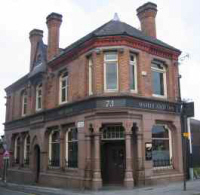 Marble Arch, Manchester M4 The Grade II-listed Marble Arch in Ancoats, on the Rochdale Road just north of Manchester’s city centre ring road, would be an essential stop for anyone with an interest in historic pubs, with its polished façade and glazed tile interior. But it’s also a brewpub with an inviting beer offer of well-brewed own brands, all organic, supported by an imported beer list.
The strong mild Chocolate Marble is one of the most acclaimed of the pub’s own beers. It’s a very dark amber brown, with a fine yellowy-beige head and a fruity and lightly spicy dark malt aroma with coffeeish hints. The palate is definitely coffesish, very smooth, silky and luscious but dry with some sweet chocolate body, mineral and berry flavours emerging. Bittering herb notes blossom in the swallow, with dark roasty malt on the finish still characterised with a sweetish chocolatey slick and some gritty mineral notes. A great beer, and deservedly a multiple award winner, most recently winning gold in the regional strong mild categroy at the National Winter Ales Festival in 2010.
Read more about this beer at ratebeer.com: http://www.ratebeer.com/beer/marble-chocolate-marble/83397/
National Winter Ales Festival 2010
ABV: 4.8%
Origin: Leeds, West Yorkshire, England
Website: www.leedsbrewery.co.uk
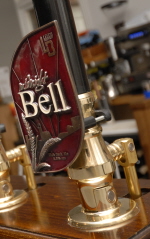 Leeds Midnight Bell Midnight Bell is a fine and rich dark mild named in honour of its brewery’s showcase pub in Leeds’ round foundry development. The brewery, opened in 2007, is currently the only independent in the city, with some well-made, imaginative and stylishly presented lines.
Roast and chocolate malts yield a dark chestnut/amber beer with a foamy light beige head and a strong and spicy blackcurranty hop aroma with a touch of roast. A full flavoured roasty palate has some firm coffee quality, with the sort of blackcurrant fruit notes found in some fine coffees. There’s a jab of dry roast and some caramel sweetness with spicy retronasals. The roasty chewy fruity berry finish is dry and sappy overall and notably long for the style. One of the most complex and enjoyable milds I’ve tasted in a while, it took the silver medal in the strong mild class at the National Winter Ales Festival in 2010.
Read more about this beer at ratebeer.com: http://www.ratebeer.com/beer/leeds-midnight-bell/77331/
Top Tastings 2009
ABV: 4.5%
Origin: Kilkeel, Dúin, Northern Ireland
Website: www.whitewaterbrewing.com
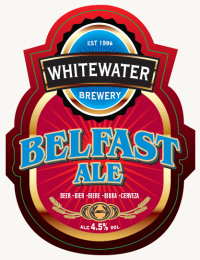 Whitewater Belfast Ale Ireland is a mixed bag of a country for the beer connoisseur. The island gave us one of the world’s classic styles in dry Irish stout, but domestically the nitrogenated evolution of that style has been instrumental in building what’s now the duopoly of two global giants, Diageo and Heineken. In the Republic, a handful of micros struggled to grab and maintain a toehold on the market even during the boom years of the Celtic Tiger economy. In the six counties of Northern Ireland, there’s been something of a resurgence in cask ale in recent years, thanks partly to the growth of the Wetherspoons pub chain, which has a presence in most of the major towns, and partly to the space for cultural change opened up by the “peace process”. Wetherspoons import quite a lot from the mainland, but there are two now well-established Northern Irish micros and two more recently opened.
In early summer of 2009 I finally pinned the last of the major British capitals on my facebook TripAdvisor map with a trip to Belfast, and took the opportunity to try some local brews. The one that brought the biggest smile to my face was Belfast Ale from the Whitewater brewery, founded in 1996 near Newry. I might also have been influenced by first encountering it on handpump at the mosaic and stained glass-encrusted Crown Liquor Saloon, one of the star heritage pubs of the British Isles, which still manages to be a relaxing and welcoming drinking hole with top notch beer despite being an essential stop on the city’s growing tourist circuit.
Belfast Ale has been classed here as a bitter but it displays its local provenance by exhibiting shades of the near extinct style of red Irish ale, as well as a biscuity maltiness reminscent of traditional Scottish styles — besides geographical proximity, the region has deep and tangled historical and cultural ties with the West of Scotland. The colour and grainy biscuit quality result from the presence of torrefied wheat and unmalted roast barley, the latter also an essential ingredient in classic dry stout.
The beer is a good rich reddish-amber with a mainly malty aroma. A smooth malty palate has tasty red fruit notes and a light but drying bite of hops. The swallow is quite pursing, setting up a drying finish with light but definite hops, a minerally touch of roast and a late treacle toffee notes. A substantial, well-balanced and very decent beer named for a fascinating and welcoming city.
Read more about this beer at ratebeer.com: http://www.ratebeer.com/beer/whitewater-belfast-ale/31973/
Top Tastings 2009
ABV: 4.8%
Origin: Malle, Antwerpen, Vlaanderen
Website: www.trappistwestmalle.be
 Westmalle Extra The Cistercian Trappist Abdij Onze-Lieve-Vrouw van het Heilig Hart van Westmalle, on the main N12 road between Antwerpen and Turnhout in the Belgian Kempen, is home to arguably the most influential, and alongside Chimay the most commercially active, of the Trappist breweries. Its brace of regular beers, the dark Dubbel and golden Tripel, have provided the template for scores of secular imitators. It’s lesser known that the abbey brews a third, lower gravity, beer primarily for consumption by the monks themselves, a beer sometimes referred to for obvious reasons as Singel but officially named Extra.
Until recently the beer was almost impossible to obtain publicly, though it occasionally hopped across the main road to the famous (and recently rebuilt) Café Trappist opposite, the unofficial brewery tap. Given the compulsion for all things bearing the Authentic Trappist Product seal among certain members of the international beer appreciation community, this made it one of the world’s most recherché beers, scarcer even than the strictly rationed output of the Westvleteren monastery. When Tim Webb and Joris Pattyn listed it as one of their 100 Belgian Beers to Try Before You Die in 2008, there was some criticism of the implicit elitism in including beers the general reader would find completely inaccessible. But Tim and Joris probably had inside information, as since then Extra has become a little less scarce. Supplies are now finding their way to a few specialist pubs and beer festivals — I got my first taste at the Kulminator in Antwerpen.
It would be a shame if Extra suffered the same scale of fuss and bother as Westvleteren’s beers, as, appropriately for its intended consumers, it’s a modest and unassuming brew. Joris describes it as “the ultimate Belgian session beer.” Like the other Westmalle beers it uses French and Bavarian malts, German and Czech Žatec hops and the house yeast, though I’m unsure if it also includes the candy sugar added to the stronger brews.
It’s a blond beer with a rich and creamy white head and a light creamy, malty and slightly hoppy aroma which is quickly disappated if served in the traditional Westmalle goblet glass. A pale, slightly lagery palate has sharp citric and sweat notes, strawberry fruit and prickly edges. The swallow is refreshingly dry, leading to a lightly dry but creamy finish, excellent balanced with slightly chewy hops. Not quite enough to make me want to become a monk, but it sure must brighten up their days.
Read more about this beer at ratebeer.com: http://www.ratebeer.com/beer/westmalle-extra/25406/
Top Tastings 2009
ABV: 4.9%
Origin: Glasgow, Scotland
Website: www.westbeer.com
 West For four decades cask ale has been the focus of the British beer consumer movement, and the technical specifications for its production and dispense have become embedded in the ideology of beer appreciation as if they’re judgements of value and quality, with “lager” as their polar opposites. This was always problematic, but was just about sustainable so long as practically the only decent beer being brewed in the UK was cask ale, and the only alternatives were ghastly substandard travesties churned out by industrial breweries to maximum profit margins and cacophanies of marketing hype. But the emergence of craft-brewed beers that don’t conform to the specs of “real ale” (and, by grudging extension, bottle conditioned ale) is now challenging both the prejudices of beer drinkers and the Talmudic complexities of CAMRA’s official policy. Craft-brewed lagers designed for filtering into bottles or for gas pressure dispense are at the sharp end of the debate.
A short beer review is not the place to go into these issues in detail, but it’s important context, as Glagow brewpub West is one of the founders of Lagers of the British Isles (LOBI), a joint initiative by artisanal lager brewers to help promote their products. The brewery is also remarkable for its location in a corner of the old Templeton Carpet Factory overlooking Glasgow Green, a jaw-droppingly camp and extravagantly polychromatic late 19th century industrial building popularly known as the Doge’s Palace as it parodies the iconic Palazzo Ducale in Venice.
West is the brainchild of a Franconian expatriate, Petra Wetzel, and brews with appropriately Germanic Reinheitsgebot-compliant rigour, to standards of quality that have even seen it win out in Germany in competition with native brews. Its flagship pale lager St Mungo, named after Glasgow’s patron saint, is also available outside the brewpub and is probably among the top three best golden lagers brewed in the UK. But when I found myself at a dark wood table in the brewpub’s cavernous interior one uncharacteristically balmy afternoon last summer, I particularly appreciated the Dunkel, a rare style for a British brewer.
Brewed from five different malts, it’s a dark chestnut brown with a fine beige head and a soft chocolate malt aroma lifted by hops and spice. There’s lots more chocolate malt on the full palate, given interest by subtle slightly acidic fruity tones and spready chewy hops. A mild but moreish finish follows with more dark chocolate, and developing herb and cream notes. Overall it’s a beer that’s achingly authentic, beautifully fresh, easily drinkable and thoroughly satisfying.
Read more about this beer at ratebeer.com: http://www.ratebeer.com/beer/west-dunkel/57108/
Top Tastings 2009
ABV: 2.8%
Origin: Horsham, West Sussex, England
Website: www.weltonsbeer.com
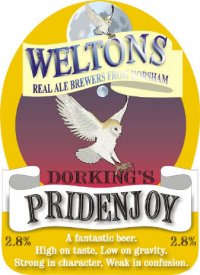 Weltons Pridenjoy Overall this Top Tastings selection exhibits a bias towards very strong beers demanding contemplative sipping, but I also have an affection for low gravity beers, which in many ways are a more demanding test of the brewer’s art. Ray Welton, creator of this 2.8% beer, says it’s the hardest of all his range to brew as there’s “less to work with”.
As a rugby player Roy longed for a cask ale weak enough to drink immediately after a match and developed Pridenjoy to fill that gap in 1997. It’s proved consistently popular and was given wider exposure a few years back when Roger Protz chose to feature it in his book 300 Beers to Try before you Die, alongside an all-star cast of familiar world classics. I sampled it on cask at the Great British Beer Festival in 2009. It’s also available bottle conditioned though for a beer at this strength I’d recommend you make sure your bottles are fresh.
Established styles of low gravity beer tend to use malt and sweetness to add character and body — think of mild, sweet stout or Dutch oud bruin — but Ray has adopted a different approach, brewing a pale and quite hoppy beer. The grist is mainly Optic pale malt with chocolate, amber, Munich, crystal and wheat malts, and Northdown and Bramling Cross hop varieties.
The result is a coppery gold colour (mine was slightly hazy) with a fine bubbly white head. There’s a casky, lightly malty and hoppy aroma with a sweet note. The palate has a light malt base with citrus and pineapple hop flavours, blackcurranty around the edges, with a cleansing swallow leading to a notably peppery bitter finish. It has to be said the body is slightly thin, perhaps a little too thin to support the big hop bouquet in adequate balance, but set against the achievement of getting so much flavour and complexity into so low a gravity, that’s a minor and perhaps inevitable flaw. Not a world-beater, agreed, but a welcome and worthwhile stitch in the tapestry.
Pridenjoy will be off to a head start if the current CAMRA campaign for the so-called “People’s Pint”, demanding the abolition of duty on beers of 2.8% or less, is successful. Such a move would inevitably prompt far more brewers to stretch their skills on low gravity beers and the results would be fascinating to taste.
Read more about this beer at ratebeer.com: http://www.ratebeer.com/beer/weltons-pridenjoy/26774/
|
Cask  This pioneering new book explains what makes cask beer so special, and explores its past, present and future. Order now from CAMRA Books. Read more here. This pioneering new book explains what makes cask beer so special, and explores its past, present and future. Order now from CAMRA Books. Read more here.
London’s Best Beer  The fully updated 3rd edition of my essential award-winning guide to London’s vibrant beer scene is available now from CAMRA Books. Read more here. The fully updated 3rd edition of my essential award-winning guide to London’s vibrant beer scene is available now from CAMRA Books. Read more here.
|














